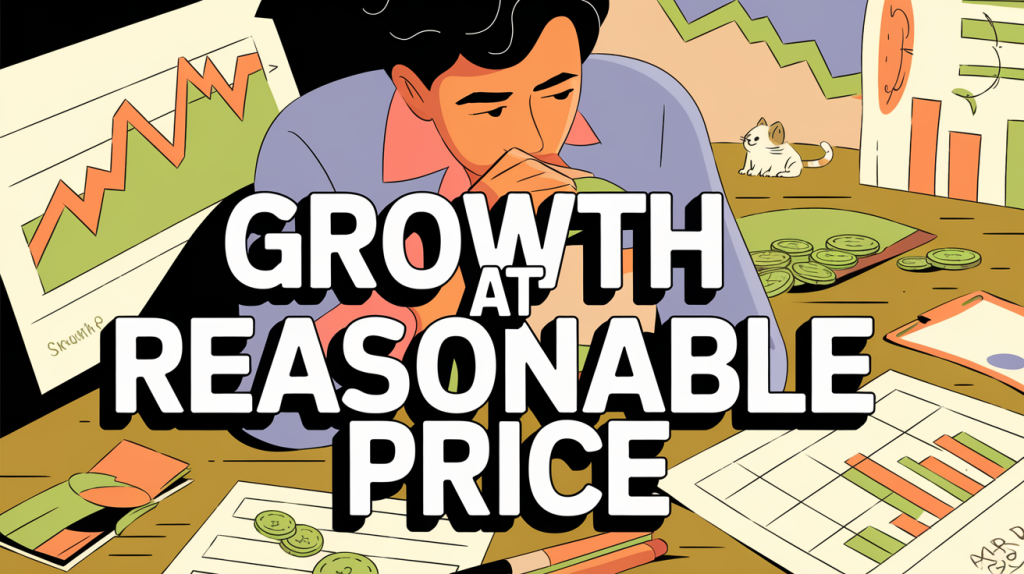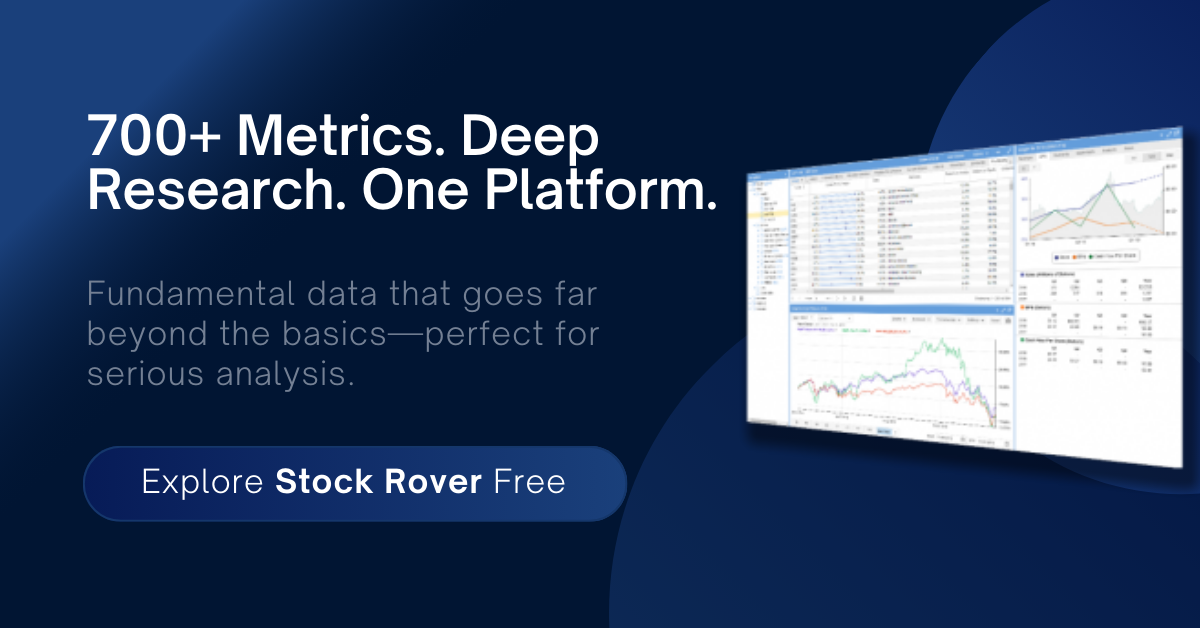
Why GARP Deserves a Spot in Your Portfolio
Every seasoned investor eventually faces the dilemma: should you chase growth or hunt for value? The truth is, you don’t have to choose. The “growth at reasonable price” strategy, or GARP, blends the best of both. In a market where traditional value has struggled and pure growth is priced for perfection, GARP sits at the sweet spot. It rewards those who can recognize quality businesses with durable earnings power before the crowd catches on. If you’ve ever admired Buffett’s investments in Apple, Coca-Cola, or American Express, then you already understand how GARP works.
Let’s walk through why this strategy works, how it compares to other approaches, and how it can enhance your existing value investing process.
GARP Defined: Where Growth and Value Meet
Peter Lynch was instrumental in popularizing the GARP strategy during his legendary run managing the Fidelity Magellan Fund, where he averaged an annual return of 29% over 13 years. While Buffett evolved into GARP over time, Lynch was the first to openly embrace the philosophy at scale. He looked for companies with strong earnings growth, but only if they could be bought at reasonable valuations. His use of the PEG ratio made it a staple metric for identifying GARP candidates.
The contrast between Lynch and Buffett is instructive. Lynch favored a faster-moving, bottom-up approach. He wasn’t afraid to buy smaller companies with shorter track records, provided their earnings were accelerating and their valuations were sensible. His goal was to ride these growth stories for a few years until the market caught on. Buffett, by contrast, focuses on long-term ownership of businesses with enduring moats. He seeks durability over speed and prefers to hold compounders indefinitely when they continue to outperform intrinsic value expectations. Lynch moved with agility; Buffett moves with permanence. Both approaches are valid, but they differ in temperament and time horizon. Lynch’s success showed that high returns don’t require speculative bets, just good businesses bought at the right price.
To understand GARP, you need to move beyond the binary of value versus growth. GARP isn’t a compromise, it’s a discipline that seeks above-average earnings growth at valuations that still offer a margin of safety. These stocks typically have solid fundamentals, strong margins, and wide moats. Unlike speculative growth, they also come with realistic expectations.
GARP investors look beyond simple price-to-earnings ratios. They focus on PEG ratios, return on invested capital, and historical earnings trends: metrics that highlight companies growing into their valuation rather than reaching for unsustainable highs.
Buffett’s Evolution: From Deep Value to GARP-like Quality
Warren Buffett’s journey mirrors the GARP philosophy more than most realize. Early in his career, he hunted for deep value “cigar butt” stocks — companies trading below liquidation value. But in recent decades, he’s shifted toward high-quality businesses that compound capital over time. These are companies with strong brand recognition, predictable earnings, and pricing power.
Apple is a great example. When Buffett bought in, it was a growing business trading at modest multiples with fortress-like financials. It wasn’t cheap in the traditional sense, but it was undervalued relative to the durability of its growth. This is GARP in action, not abandoning value, but redefining it through the lens of quality and growth.
The Quality Factor Connection
There’s strong academic support for the quality factor, which GARP strategies tend to capture. High return on equity, consistent earnings, and low financial leverage all contribute to long-term outperformance. These traits allow a company to survive downturns, reinvest intelligently, and expand shareholder value.
While momentum and size get the headlines, quality quietly compounds. Buying high-quality businesses at reasonable valuations is one of the few strategies that continues to outperform across decades and economic regimes. If you can combine quality with a valuation that still gives you upside, you’re stacking the odds in your favor.
Why GARP Stands Out in This Market Cycle
In today’s environment of higher interest rates, slower global growth, and sticky inflation, both deep value and high-flying growth face headwinds. Deep value often comes with operational risks and financial fragility. Growth stocks, on the other hand, still trade at demanding multiples and are sensitive to any earnings disappointments.
GARP stocks offer a middle ground. These are businesses that are still expanding. Not at the breakneck pace of tech darlings, but at a sustainable rate, and they generate real free cash flow. Their balance sheets are strong. Their customer base is loyal. Most importantly, they don’t require perfection to justify their current prices.
How to Spot GARP Stocks
The GARP formula isn’t magic. It’s about identifying companies with strong fundamentals and realistic growth expectations, then making sure the price you pay leaves room for upside. Look for companies with consistent earnings growth, a high return on invested capital, and valuations that are still anchored in reality.
PEG ratios below 1.5 can be a helpful signal, but context matters. An utility with slow growth might never look like a GARP candidate, even if it’s cheap. A high-growth SaaS stock might never be cheap enough to qualify. You’re looking for that middle ground: profitable companies with room to grow, trading at prices that reflect some skepticism but not outright pessimism.
Sample GARP Screen to Get You Started
To help you put this into practice, here’s a simple GARP screen you can run using Stock Rover or your favorite screener:
- Market cap between $500M and $10B (avoids both nano-caps and mega-caps)
- Revenue growth over past 5 years > 10%
- ROIC > 12%
- PEG ratio < 1.5
- Net debt to EBITDA < 2.0
This screen isn’t exhaustive, but it filters out speculative plays and zero-growth companies. The goal is to surface quality compounders that the market hasn’t fully appreciated yet. Add your own filters based on your sector preferences or event-driven overlays.
GARP Is a Tool, Not a Religion
It’s tempting to elevate GARP to the default strategy for all environments. It’s elegant. It’s balanced. And it has a strong track record. But it’s also important to remember that every strategy has seasons.
I still believe in cigar butts. I still like event-driven special situations. I still look for net-nets, asset plays, and turnarounds. GARP is one of the arrows in the quiver, an important one, especially when quality is on sale, but it shouldn’t replace the full spectrum of value strategies that continue to produce results when applied with discipline.
If you’re building a diversified value portfolio, GARP can give you exposure to high-quality compounders that might not be cheap enough for a deep value screen, but still offer exceptional returns over time. That’s a useful complement to the smaller, more volatile names that might offer higher upside but require more patience and risk tolerance.
Closing Thoughts: Adding GARP to Your Investment Toolkit
Growth at reasonable price is not about compromising between value and growth. It’s about finding companies that meet both criteria. Done right, GARP can reduce downside risk while still giving you a shot at market-beating returns. It rewards thoughtful underwriting and rational expectations—two skills every serious investor should sharpen.
But use it wisely. Don’t let it crowd out the other strategies that have served you well. Keep turning over rocks. Keep looking for inefficiencies. Let GARP be one more tool, not the only one. If you use it selectively, it can give you the consistency and resilience your portfolio needs when the rest of the market gets noisy.
Because sometimes, the best growth stories are the ones no one is talking about yet. And if you buy them at a reasonable price, the returns take care of themselves.

Shailesh Kumar, MBA is the founder of Astute Investor’s Calculus, where he shares high-conviction small-cap value ideas, stock reports, and investing strategies.
His work has been featured in the New York Times and profiled on Wikipedia. He previously ran Value Stock Guide, one of the earliest value investing platforms online.
Subscribe to the Inner Circle to access premium stock reports and strategy insights.
Featured in:








